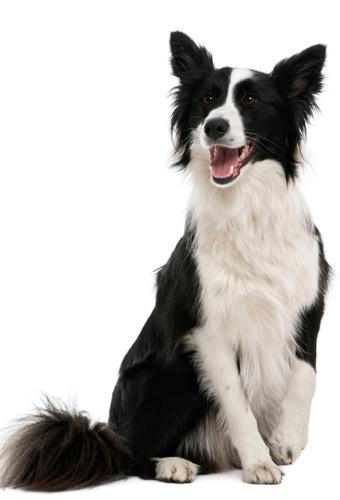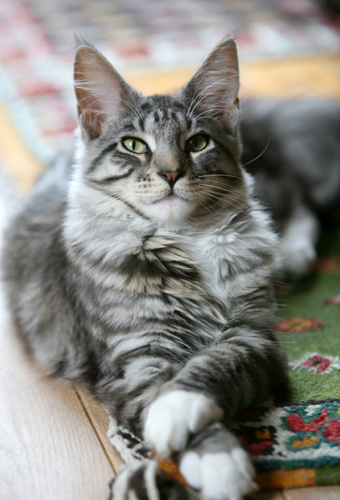Introduction
There is an important difference between editing and revising. Editing is searching for and correcting errors in grammar, punctuation, and spelling (including typos). Revising is rewriting, adding, deleting, and rearranging sentences and paragraphs. It is a decision-making process based on your audience and purpose. Your role as a writer is a powerful one, and you must make careful choices during revision to make your writing more clear, engaging, and effective.
In this lesson you will learn revision strategies to help you polish your essay’s style and tone. A writer’s style is created through diction and syntax (sentence structure). Tone becomes apparent through the writer’s style.
Read the “Pet Diaries” based on an entry at www.joke-of-the-day.com. Both the dog and the cat are portrayed as writing about the same subjects: their people, their food, and their toys. Pay attention to the differences in style (diction and syntax) that result in the differing tones in the excerpts.
| Excerpt from a dog’s daily diary: | ||
| 8:00 a.m. | Oh Boy! | Dog food! My favorite! |
| 9:30 a.m. | Oh Boy! | A car ride! My favorite! |
| 10:00 a.m. | Oh Boy! | A walk! My favorite! |
| 10:30 a.m. | Oh Boy! | Dog food! My favorite! |
| 11:00 a.m. | Oh Boy! | Treats! My favorite! |
| 12:00 noon | Oh Boy! | Toys! My favorite! |
| 1:00 p.m. | Oh Boy! | The yard! My favorite! |
| 4:00 p.m. | Oh Boy! | The kids! My favorite! |
| 5:00 p.m. | Oh Boy! | Dog food! My favorite! |
| 5:30 p.m. | Oh Boy! | Mom! My favorite! |
| 6:00 p.m. | Oh Boy! | Playing ball! My favorite! |
| 10:00 p.m. | Oh Boy! | Sleeping in my master’s bed! My favorite! |


Excerpt from a cat’s daily diary:
Day 183 of my captivity: My captors continue to taunt me with bizarre little tangling objects. They dine lavishly on fresh meat while I am forced to eat dry cereal. The only thing that keeps me going is the hope for escape and the mild satisfaction I get from ruining the occasional piece of furniture.
Tomorrow I may eat another house plant. Today my attempt to kill my captors by weaving around their feet while they were walking almost succeeded—must try this again at the top of the stairs. In an attempt to disgust and repulse these vile oppressors, I once again induced myself to vomit on their favorite chair—must try this again on their bed. Hmm. Not working according to plan.
Decapitated a mouse and brought them the headless body in an attempt to make them aware of what I am capable of and to try to strike fear into their hearts. They only cooed and condescended about what a good little kitty I was.
There was some sort of gathering of their accomplices tonight. I was placed in solitary throughout the event. However, I could hear the noise and smell the food. More importantly, I overheard that my confinement was due to my power of “allergies.” Must learn what this is and how to use it to my advantage.
Read each question about the pet diaries and choose the best answer. Check your understanding after each question.
1. The dog’s syntax (sentence structure) can best be described as—
- complex and inverted.
- simple and exclamatory.
- compound and interrogative.
B is correct. The dog’s syntax is simple. He repeats "Oh, Boy" and uses exclamation marks frequently. The repetition and exclamations reveal the dog’s simple thought patterns.
Close2. The cat’s syntax can best be described as—
- telegraphic and spare.
- contemplative.
- composed mostly of simple statements.
B is correct. The cat uses abstract nouns such as “hope” and “fear.” The cat constructs an extended metaphor of imprisonment. His masters are his “captors” and “vile oppressors” whom he wishes to escape. He describes being sentenced to “solitary.” In addition, the cat is thoughtful in his step-by-step thinking: "must try this again at the top of the stairs"; "must try this again on their bed"; "Hmm. Not working according to plan."
Close3. The dog’s diction (word choice) can best be described as—
- formal, scholarly, and elevated.
- repetitious, concrete, and literal.
- scientific and symbolic.
B is correct. The dog repeats himself, expressing the same immense enthusiasm for the kids as he does for treats. All his diary entries begin with “Oh Boy” and end with “My Favorite.” He uses only concrete nouns such as “dog food” and “toys.” There is no figurative language (simile, metaphor) present.
Close4. The cat’s diction can best be described as—
- ordinary and limited in variety.
- connotative.
- plain and unadorned.
“Connotative” is the best way to describe the cat’s diction. His words carry emotional associations. For example, he claims that his masters “taunt” him with “bizarre little tangling objects” and “dine lavishly on fresh meat” while they force him “to eat dry cereal.” The words “taunt” and “force” suggest cruelty and coercion. “Lavish” conveys self-indulgence, especially in contrast to the unappetizing “dry cereal.”
Close
5. The dog’s overall style can best be described as—
- rambling and dense.
- offbeat and dangerous.
- monotonous but enthusiastic.
C is correct. The dog’s style is certainly monotonous. His daily entries lack variety, but his enthusiasm is revealed through the expressions “Oh Boy” and “My Favorite” as well as through the exclamation marks, which emphasize his exuberance.
Close6. The cat’s overall style can best be described as—
- artful, witty, and sarcastic.
- wordy and opinionated.
- lackluster and awkward.
A is correct. The cat “artfully” or deliberately makes choices about language in his diary in order to convey the resentment he feels. He describes the “mild satisfaction” he gets from destroying his owner’s possessions and includes details such as bringing his masters a decapitated mouse in an attempt to make them release him from his captivity.
Close7. The dog’s tone (attitude) can best be described as—
- remorseful.
- pessimistic.
- joyful.
C is correct. The dog, in contrast to the cat, loves his masters, his food, and his toys. He does not feel remorse or shame for wrongdoing. He is optimistic (tending to stress the positive) rather than pessimistic (tending to stress the negative).
Close8. The cat’s tone (attitude) can best be described as—
- scornful.
- exuberant.
- cordial.
A is correct. The cat feels disdain or contempt for his “dry” food and his “bizarre” toys. His masters are “captors” who have “accomplices.” He is not cordial or gracious.
Close